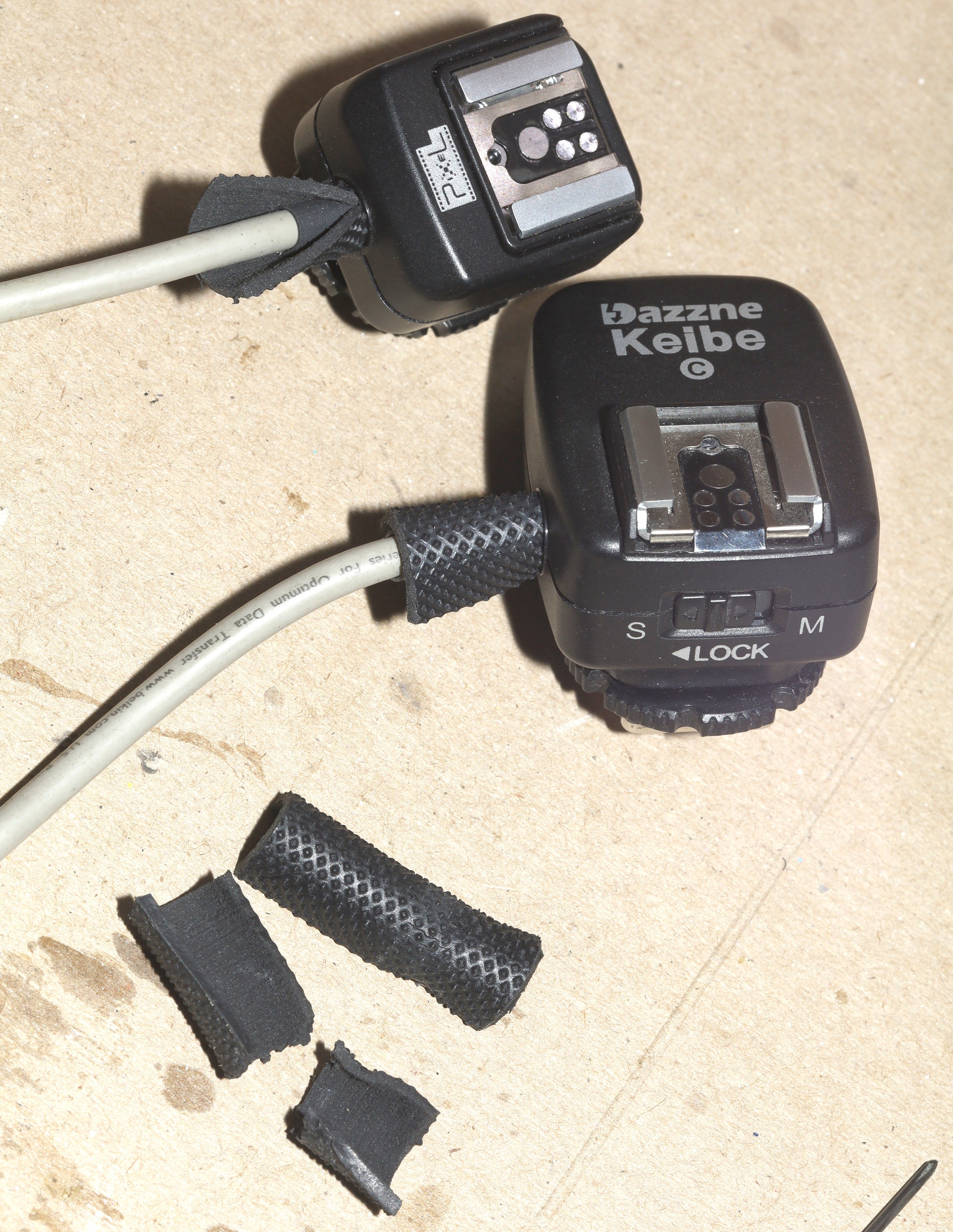
The lion kingdom's attempt to extend the range of its flash extension cord dried out & broke after 2 years. That cable was a pain anyway. In the interest of reliability, a cheap radio set seems necessary.
https://www.amazon.com/Neewer-Wireless-Speedlite-Receiver-Universal/dp/B00CO2WP0U
https://www.amazon.com/Neewer-Wireless-Speedlite-Receiver-Universal/dp/B00A47U22U
Maybe something home made could be smaller. The transmitter on this one has an A23 battery & the receiver has 2 AA's. Hauling more batteries is a pain. It uses 433Mhz. The flash & camera already have power. Lions just want to turn on the flash & camera without having to turn on a separate radio set. The cable was simple.
Unfortunately, there's no power in the hot shoe. It would need a separate cable going to the camera's mane board. A separate battery & power switch is the simplest solution. Given the low cost, lions would just stick with the commercial chinese radio set.
The only way lions could envision improving on that is by boosting a single battery or using a lipo. It's unbelievable that camera gear still doesn't use modern lipos. A 1/250 flash sync isn't hard to do with an ISM radio. Another advantage to hacking it is to learn enough about the TTL protocol to convert an antique flash to TTL. The hacked antique would require buying another hot shoe adapter if the cable system was adapted to wireless, so from a cost perspective, it doesn't matter.
So the Neewer radios are absolutely worthless. They have only 1 pin on the transmitter even though the receiver has 5 pins, so they don't support TTL, high speed, or focal length. It seems there are no radios which support encapsulating the full wired signal & it just requires a new flash with a built in radio or which supports pre flashes.
Reviewing some notes on the Powershot G3 & EOS 50.
http://staff.www.ltu.se/~joborg/ettl/
This document was from 2014 & covers the electrical signals. The G3 was from 2002 & the EOS 50 was from 1995. Animals just don't reverse engineer flash protocols anymore. It seems to be a very complicated protocol at 100kbaud. 1 key is the clock signal for the next byte reads back the response to the previous byte. The response is delayed by 1 byte or by indicating busy.
Directly forwarding all 5 signals would not be possible over a radio. It would require 5 channels, 200kbit per channel, 5us latency to replicate the signals without error correction. The best bet is to bake all the command responses in the transmitter & only send 4 commands over the air: set power, set focal length, fire, get status. The status would have to be prefetched between camera commands.
A video just covers the IR protocol.
https://www.diyphotography.net/reverse-engineering-how-canon-flashes-communicate/
 lion mclionhead
lion mclionhead
Discussions
Become a Hackaday.io Member
Create an account to leave a comment. Already have an account? Log In.